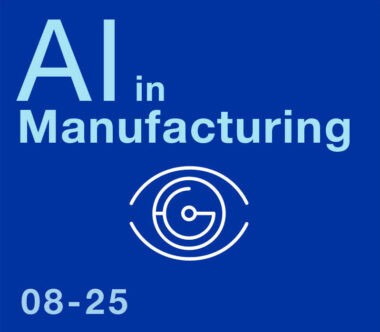Maximizing Continuous Improvement with GenAI

Generative AI tools have the potential to raise continuous improvement to a new level – continuous intelligence.

TAKEAWAYS:
● Manufacturers face hurdles in trying to advance continuous improvement initiatives due to sustainability and connectivity issues.
● GenAI tools can enhance the efforts of human CI practitioners.
● Challenges with GenAI tools include data security and readiness, integration with legacy systems, and ROI.
Manufacturing organizations are built around lean, agile, iterative processes, and a core component of operational excellence is continuous improvement (CI). This has long been a top priority for manufacturers. Across functions, manufacturers rank CI as among the most mature areas of operation, according to Deloitte’s 2025 Smart Manufacturing Survey. Yet, the tools and workflows that enable CI have not always kept pace with innovation. To contend with some of the most stubborn CI challenges in today’s manufacturing environment, enterprises can look to maturing AI capabilities that support faster improvement cycles, digitization, and sustained change.
The initial hype around Generative AI (GenAI) produced a wave of pilots and demonstrations, but measurable value and ROI were in many cases elusive. The early excitement has given way to a more grounded, strategic view of GenAI’s value. In CI, using GenAI to automate aspects of workflows supports efficiency, preserves change, and captures the financial impact of change. Just as importantly, it can enhance the workforce experience by empowering workers with modern tools that help them perform to their greatest capacity. It also sets the stage for exploring end-to-end capabilities with agentic systems that not only autonomously perform a task but also determine independently how best to do so.
Exploring the value, challenges, and stakeholders reveals that a significant CI opportunity is within reach.
A Digital, GenAI-enabled CI Function
CI strives to make incremental and aggregated improvements to processes, procedures, production, and maintenance such that standard work improves over time and is maintained. It creates value by systematically removing waste and standardizing leading practices.
The most significant challenge is the long-term sustainability of improvements. Some manufacturers have taken steps to digitize continuous improvement, leveraging integrated systems to capture, track, monitor, and maintain change. But few organizations have been successful with digital CI. Much of CI today is manual or relies on disconnected tools, such as spreadsheets for tracking KPIs, specialized CI software (often disconnected from operational systems), custom dashboards, and manual handoffs between systems.
Nevertheless, many manufacturers are striving to improve operations while contending with sustainability and connectivity issues that often hinder CI implementations.
The tools and workflows that enable continuous improvement have not kept pace with innovation.
Imagine a GenAI-enabled system that continuously analyzes process data across systems, automatically documents knowledge, predicts variations before they occur, and verifies that improvements are sustained. These advances can be realized while also quantifying the financial impact of each change and identifying improvements that are transferable to other production lines or facilities. With GenAI, CI shifts from periodic initiatives to continuous intelligence that creates institutional memory and builds on past successes.
Leveraging GenAI enhances the efforts of human CI practitioners and establishes CI as a strategic enabler for operations leaders. It is a tool to navigate complexity, reduce executive burden, enhance organizational resilience, and improve the ability to make the right decision quickly.
A Closer Look at Capturing and Measuring Value
GenAI for CI can help address system and data gaps that have frustrated implementation and sustainability in the past. Consider three high-impact use cases where GenAI can improve CI:
Root cause analysis – GenAI can accelerate issue resolution by rapidly aggregating data from sources like shift reports, lab results, and SOPs. Integrated with digital twins for advanced simulations, GenAI-enabled applications can conduct iterative testing and generate detailed documentation. This supports the digitization of CI, moving from time-consuming, sometimes manual tasks to a connected, automated process overseen by CI professionals.
Preventive maintenance – CI often relies on static schedules. GenAI applications can continuously monitor operational data to predict specific component failures, optimize maintenance timing, trigger automatic parts ordering, generate tailored work instructions, and refine predictive models based on real-world results. This helps identify and sustain improvements by leveraging automation across the interconnected components of CI.
Quality control – When process deviations arise, GenAI can consolidate data from multiple systems, generate and test hypotheses, simulate process changes, and validate the effectiveness of corrective actions. It can also standardize documentation and disseminate lessons learned across the organization. The impact is found in more fully digitizing quality control and sustaining improvements through near-real-time autonomous issue detection and resolution.
GenAI applications go beyond analytics and impact end-to-end workflows. They help integrate data, generate insights, drive action, and document outcomes. GenAI for CI brings together data and process automation to help humans make faster and better decisions. Considering enterprise-level and functional impacts, manufacturers may leverage two value measurement approaches for assessing ROI.
For functional value, manufacturers should look to a reduction in process variability, a decrease in maintenance downtime, improvement in first-pass yield, time saved in decision-making processes, and reduction in knowledge transfer time for new employees. At the enterprise level, KPIs to monitor include improvements in overall equipment effectiveness, a reduction in unit costs, an optimization of working capital, increased revenue per employee, and reduced time-to-market for new products.
Additionally, unlike traditional technology investments that depreciate, GenAI (and agentic systems) present compounding ROI over time as the system learns and improves. As such, ROI calculations should highlight both initial benefits and accelerating returns. Implementing a balanced scorecard with leading indicators (process improvements) and lagging indicators (financial outcomes) helps build confidence and capture value during transformation.
Challenges With Adoption
To date, manufacturers have been cautious about GenAI’s practical value. Just 24% have deployed a GenAI solution at the facility or network level, and only 38% are piloting GenAI applications, according to Deloitte’s 2025 Smart Manufacturing Survey. This cautious approach is strategic, as manufacturers have concerns around data security, intellectual property protection, data readiness, and integration with legacy systems and workflows. There are also potential risks from unproven technology disrupting production, a possible lack of clarity around ROI and implementation costs, and the challenge of change management and adoption among frontline workers.
As such, leveraging GenAI for CI may prompt some initial executive skepticism. The work and change required to maximize outcomes is significant. With operations stretched thin and facing supply chain disruptions and workforce shortages, new technology projects may be a low priority. Meanwhile, technology leaders may have valid concerns about enterprise readiness for GenAI, in particular issues with data quality, integration, new maintenance requirements, and security. Ultimately, there may be an impression that GenAI for CI is a burden rather than an asset. Marginal or uncertain value may not be enough to justify the work and investment needed to maximize ROI.
Leveraging GenAI establishes CI as a strategic enabler for operations leaders.
With CI, manufacturers need confidence and clarity in the outsized value GenAI can deliver. Addressing pressure on operations with GenAI moves toward alleviating (rather than creating) burdens. GenAI relies on data and technology investments already made, constituting a force multiplier. What is more, GenAI and agentic systems can function with imperfect data. Whereas more traditional AI systems typically require complete, structured, and highly accurate datasets, GenAI applications can accommodate unstructured, incomplete data by inferring data based on other sources and patterns. This capability is suited to the sometimes messy, physical world of manufacturing.
A Team Effort for Value
GenAI for CI requires the participation of stakeholders across the enterprise. Rather than a technology demonstration performed in isolation, a transformational initiative takes collective leadership, and stakeholders play distinct roles.
To raise the opportunity and catalyze discussion and investment, the most credible originator is an operations leader with firsthand CI experience who is teamed up with a technology leader who appreciates the potential of GenAI and agentic systems. The key decision-makers change as implementation scales. Initial project approval may come from operations leaders attempting to address specific pain points in CI. Presuming value is captured and scale is justified, IT leadership steps in to address integration challenges with the manufacturer’s technology and software. And based on demonstrated success, the CFO and CEO can grant approval for enterprise-wide deployment.
This is a true team effort. If IT drives the initiative without operations buy-in, it could be seen as a “technology project looking for a problem.” The finance team might focus on immediate ROI, neglecting the longer-term transformational potential. The scope and authority of single facility leaders is too narrow for an enterprise-level project. Given the unknowns, complexity, risks, and timeline, GenAI in CI needs to have executive-level buy-in across the lifecycle of the investment.
Root cause analysis, preventive maintenance, and quality control are three high-impact uses cases for GenAI.
There is another important stakeholder group – the workforce. Manufacturers face significant challenges in attracting and retaining talent. Tools that help CI professionals perform their tasks more effectively and efficiently enhance the impression that employees are engaged in valuable, mission-based work. The manufacturing environment presents unique tooling and interfaces, and leveraging GenAI and agentic frameworks can remove the embedded friction between systems and processes while giving employees modern tools that improve the work experience.
Moving Forward with GenAI and CI
Many manufacturers already enjoy significant CI maturity, and this function will continue to be an imperative for years to come. For enterprises already on a technology transformation journey, leaning in with GenAI deployments can extract more value from investments already made. To get started, leaders can identify CI value targets and begin to embed GenAI use cases in the enterprise’s transformation roadmap. Value can be tied to specific KPIs related to productivity and efficiency, but GenAI in CI may offer more intangible rewards that should also be reflected in the enterprise strategy, such as improvements in talent recruitment and workforce retention.
One place to start is by capturing quick wins with discrete deployments that improve a component of CI. Taking a phased approach to value delivery with clear governance models and security architecture can evidence the value of GenAI in CI. This fuels confidence and supports further investment while also giving the enterprise time to make incremental improvements to data readiness, security, and maintenance.
CI remains a major focus in manufacturing. GenAI and agentic systems present an opportunity to transform how CI is performed, creating efficiency, shifting to fully digital processes, and sustaining change and improvements over time. M
About the authors:

Saeed Haq is a Technology Fellow at Deloitte Consulting LLP and a smart manufacturing architecture and data and analytics strategy leader in Deloitte’s AI & Engineering practice.

Brian Zakrajsek is a Specialist Leader with Deloitte Consulting LLP, leading solution architecture for the US Smart Manufacturing practice.